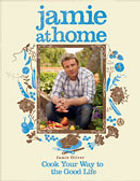- Healthy recipes
- Healthy snacks
- Healthy lunches
- Healthy chicken recipes
- Healthy fish recipes
- Healthy vegetarian recipes
- Main Ingredient
- Chicken
- Pasta
- Vegetables
- Fish
- Beef
- Eggs
- View more…
- Special Diets
- Vegan
- Vegetarian ideas
- Gluten-free
- Dairy-free
- Budget recipes
- One-pan recipes
- Meals for one
- Breakfast
- Desserts
- Quick fixes
- View more…
- Baking recipes
- Cakes
- Biscuit recipes
- Gluten-free bakes
- View more…
- Family recipes
- Money saving recipes
- Cooking with kids
- School night suppers
- Batch cooking
- View more…
- Special occasions
- Dinner party recipes
- Sunday roast recipes
- Dinner recipes for two
- View more…
- 5 Ingredients Mediterranean
- ONE
- Jamie’s Keep Cooking Family Favourites
- 7 Ways
- Veg
- View more…
- Nutrition
- Features
- Cheap eats
- Healthy meals
- Air-fryer recipes
- Family cooking
- Quick fixes
- View more
- How to’s
- How to cook with frozen veg
- How to make the most of your oven
- How to make meals veggie or vegan
- View more
- More Jamie Oliver
- YesChef x Jamie Oliver
- Cookbook Club
- Jamie Oliver Group website
- Jamie Oliver Cookery School
- Ministry of Food
- Vegepedia
Winter crunch salad with a mind-blowing sauce
Carrots, beetroot, fennel & radishes
- Gluten-freegf

Carrots, beetroot, fennel & radishes
- Gluten-freegf
“This is a really interesting winter salad dish. Its proper name is 'bagna cauda', which basically means ‘hot bath’ in Italian, and the idea is that you have a load of raw or just-cooked pieces of vegetable that you dip into a delicious, warm sauce. You may like your sauce to be thick and oozy but I prefer mine to be quite delicate, like the texture of thin custard, with a lovely sheen to it. ”
Serves 4
Cooks In40 minutes
DifficultySuper easy
Jamie at HomeVegetablesChristmasDinner PartyStartersVegetable sides
Nutrition per serving
-
Calories 477 24%
-
Fat 44.1g 63%
-
Saturates 7g 35%
-
Sugars 9.9g 11%
-
Salt 1.06g 18%
-
Protein 8.7g 17%
-
Carbs 11.9g 5%
-
Fibre 5.5g -
Of an adult's reference intake
Tap For Method
Ingredients
- Sauce
- 6 cloves garlic
- 300 ml milk
- 10 anchovy fillets in oil , from sustainable sources
- 180 ml extra virgin olive oil , plus extra for drizzling
- 2-3 tablespoons white wine vinegar
- Vegetables
- a few young carrots
- a few small raw beetroots
- ½ celeriac
- 1 bulb fennel
- a few sticks celery
- ½ small Romanesco or white cauliflower
- 1 bunch radishes
- 1 handful small beetroot leaves
Tap For Method
The cost per serving below is generated by Whisk.com and is based on costs in individual supermarkets. For more information about how we calculate costs per serving read our FAQS
Tap For Ingredients
Method
- First, prepare all your veg, because once the sauce is done you’ll be ready to serve! Peel and finely slice the carrots, beetroot, celeriac and fennel, reserving the herby fennel tops.
- Trim and thinly slice the celery, reserving the yellow leaves. Break the cauliflower into florets.
- Trim the radishes and wash with the beetroot leaves.
- To make your sauce, peel the garlic cloves and put into a saucepan with the milk and anchovies, then bring to the boil. Simmer slowly for 10 minutes, or until the garlic is soft and tender, keeping a close eye on the pan to make sure the milk doesn’t boil over. Don’t worry if it spits and looks a little lumpy – simply remove from the heat and whiz the sauce up with a hand blender.
- Gently blend in the extra virgin olive oil and the vinegar a little at a time – you’re in control of the consistency at this point. If you like it thick, like mayonnaise, keep blending. Now taste it and adjust the seasoning. Make sure there’s enough acidity from the vinegar to act like a dressing. It should be an incredible, pungent warm sauce.
- There are two ways you can serve the warm sauce. Either pour the sauce into a bowl and place this on a plate, with the veg arranged around the bowl, or serve the veg in a big bowl and drizzle the sauce over the top.
- Sprinkle over the reserved herby fennel tops and celery leaves, then finish with a drizzle of extra virgin olive oil.
Tips
You can use any vegetables you want, and depending on the season you can do a lighter summer version or a more root-veg-based winter one. I actually prefer my veg to be raw, as I love the crunch you get from them, but if you want to boil them briefly until they’re al dente, feel free.
Related recipes
Delicious winter salad
Winter pasta salad
Warm winter salad
Related features
Best spring greens recipes
Best chard recipes
11 ways to use spring onions
Related video
How to make zero fat salad dressing: Jamie Oliver
© 2024 Jamie Oliver Enterprises Limited
- Terms of Use
- Privacy Policy
- Cookies
- Jamie Oliver Group
- Contact
- Sitemap
© 2024 Jamie Oliver Enterprises Limited
